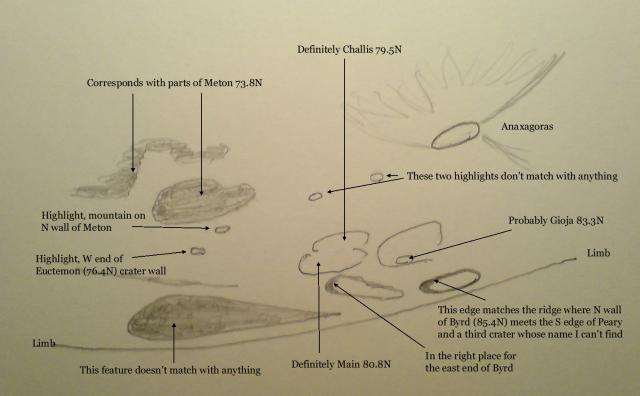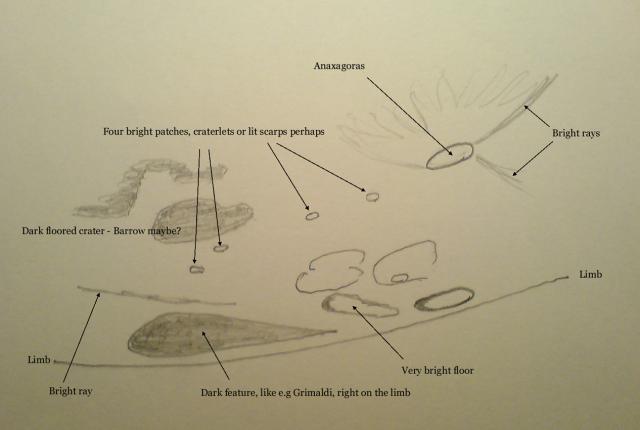Forum Replies Created
-
AuthorPosts
-
 Alan SnookParticipant
Alan SnookParticipantI appreciate your take on this Paul. Our different interpretations are certainly a measure of how the appearance of the ground changes hugely with the angle of the Sun. What I’ve done now is transfer my sketch to tracing paper so I can better test the match-up with my downloaded NASA Moon and with your screenshot. If I anchor the sketch at Anaxagoras and adjust the scale to match up the “dark floored crater” with Scoresby, it pushes the limb to the wrong place and the wrong angle. The east end of the “dark feature” is pushed off the disk. Conversely if I scale to match that squashed figure-8 in the sketch to Challis & Main then the limb is spot on. But that leaves me wondering why I didn’t note anything of Scoresby. On the both the virtual Moon and the old-school Hatfield Photographic Atlas it’s a prominent feature! Sun angle again I guess. Your interpretation has the merit of explaining more of the small bright patches.
The tracing paper overlay also suggests the E end of the “dark feature” is due to the crater de Sitter at 80 degrees N but the match is not convincing. Now better informed, I think I need to look out for the next favourable libration and have another go.
 Alan SnookParticipant
Alan SnookParticipantI have used the NASA link in Bill’s post to generate the libration-corrected map (what a magic tool!), scaled it to match my sketch which I then overlaid. That’s blown away a lot of the fog and a fair bit of the sketch makes sense now. I’ve uploaded my conclusions. The dark plain right on the limb remains a puzzle however.

 Alan SnookParticipant
Alan SnookParticipantThanks Xilman & Bill. I’ve consolidated my scribbles and added written notes, here it is for what its worth. I’ll try out NASA’s Dial a Moon thing this eve and see if that sheds any light.

-
AuthorPosts
